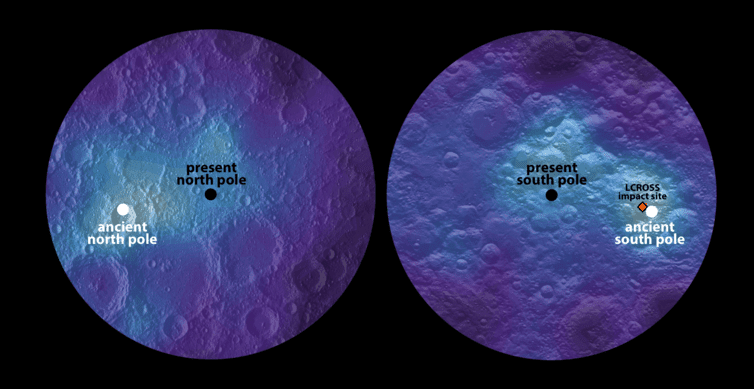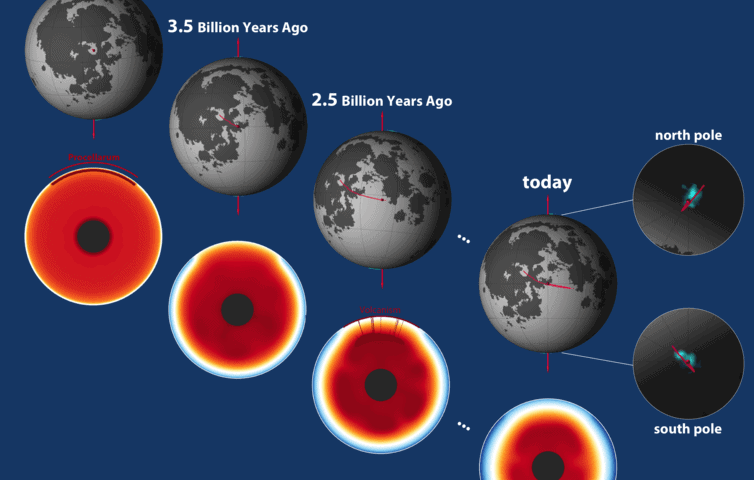Researchers studying the Moon’s ice have found evidence that Earth’s moon wandered off its original axis roughly 3 billion years ago. This would mean that our satellite is in a select group of wanderers, alongside only few other planetary bodies.

Planetary scientist Matt Siegler at Southern Methodist University, Dallas, and colleagues were examining NASA data regarding lunar polar hydrogen. The hydrogen was detected is presumed to be in the form of ice hidden from the sun in craters surrounding the moon’s north and south poles. The ice can only exist there because any significant exposure to solar rays would evaporate it into space. Therefore, the ice is a good indicator of the Moon’s axis (basically, if ice was there then we know that used to be a pole once).
Researchers have speculated about lunar ice for quite a while, but it wasn’t until the 1990s that results from NASA’s Lunar Prospector mission provided evidence for water ice – but the results were surprising. Not all the areas around the poles seemed to contain water ice, while some non-polar areas did, despite receiving some sunlight. This was also in opposite to what was observed on Mercury for example, where water was in the poles, exactly where predicted. For a long time this was a standing question, but now, American research believe they have the answer.
“This was such a surprising discovery. We tend to think that objects in the sky have always been the way we view them, but in this case the face that is so familiar to us — the Man on the Moon — changed,” said Siegler, who also is a scientist at the Planetary Science Institute, Tucson, Ariz. Billions of years ago, heating within the Moon’s interior caused the face we see to shift upward as the pole physically changed positions,” he said. “It would be as if Earth’s axis relocated from Antarctica to Australia. As the pole moved, the Man on the Moon turned his nose up at the Earth.”

In order for something of this magnitude to happen, a tremendous energy source is required. This continuously happens on Earth, as a result of due to movement of the continental plates. Polar wander on Mars resulted from a heavy volcanic region. But the Moon’s shift was internal – a huge volcanic plume being the likely culprit.
“The moon has a single region of the crust, a large basaltic plain called Procellarum, where radioactive elements ended up as the moon was forming,” Siegler said. “This radioactive crust acted like an oven broiler heating the mantle below.”
Some of the material melted, forming the dark patches we see at night, which are ancient basaltic lava, he said.
“This giant blob of hot mantle was lighter than cold mantle elsewhere,” Siegler said. “This change in mass caused Procellarum — and the whole moon — to move.”
This event could alter our understanding of the Moon’s evolution but it could also have some more practical implications, especially for governments and agencies planning “visits” to the moon. Identifying and establishing the dynamic of water on the Moon will be crucial for the establishment of a scientific base or mining operations.






